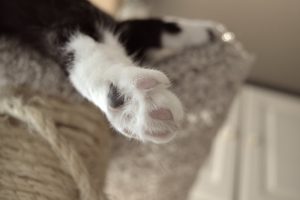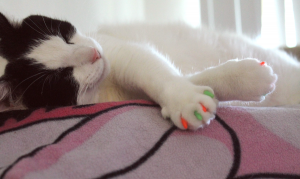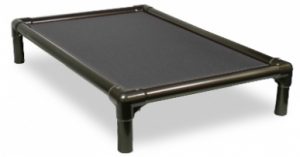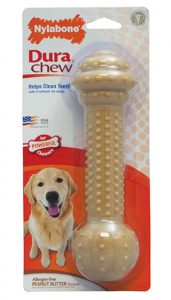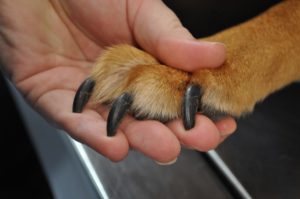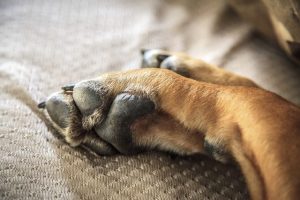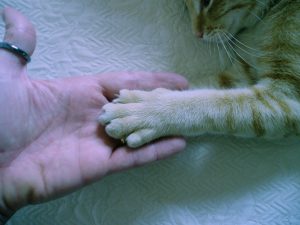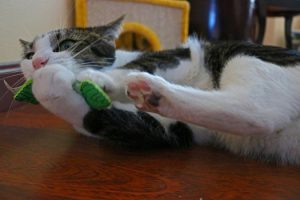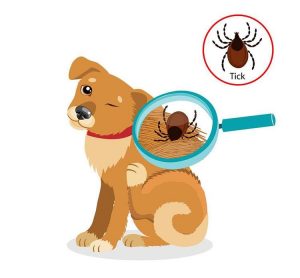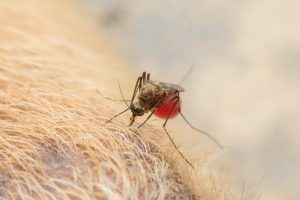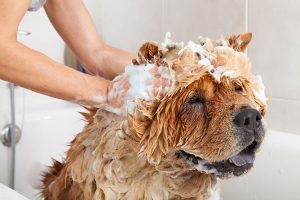Aren’t kitty paws so cute?! So little and pink! And they’re attached to your cat who will probably swat at you if you dare lay a finger on their paws. Of course, we just want to fawn over how adorable our snuggly felines are, the cutest little beings in the world, but they may not be willing to share their paws. Who can blame them? Their paws are extremely sensitive, and our hands and feet would be too if we used them to check temperature, groom our hair, hunt for food, and communicate with other humans.
Their paws are designed to help them jump, run, climb, and pounce, they have four toes on their back paws, and five toes on their front paws. Have you ever wondered why one toe happens to be closer to their wrists than the others? It’s there so your cat can grasp objects (like toys or birds) similar to their humans! Not only do cats have thumbs, but their paws are also the most sensitive part of their bodies. But there are more aspects to your cat’s paws that help with survival, grooming, and more that are important for any cat owner to know.
Paw Facts
- Just as humans are left or right handed, our cats are too! However, in cats, this difference is because of their gender. In female cats, their dominate front paw is their left, and for males, their dominate paw is their right.
- Similar to dogs, cat’s only sweat through their paws. Like the skin on our bodies, our cat’s paws act as a cooling system to our body, the only difference is their body area is much smaller than ours.
- Like humans, out cat’s toes have individual and unique paw prints, and similar to our fingerprints. Even twin kittens will not have identical paw prints.
- Your cat’s paws are very flexible. Their front paws can bend inward so they can dig their claws into whatever they’re climbing to stable themselves. But when it comes to climbing down from cat trees, bookshelves, or branches, cats can have some problems because their front paws are designed to be used for walking normally or for an upward climb. Climbing down is more difficult for cats than what people often think.
- Remember the shocks on your car? They’re what absorb the impact from speed bumps, potholes, and the rough roads we drive on the make the drive more comfortable. Our cat’s paws act the same way! This is why our cats can jump from (and sometimes fall from) great heights and they will often be unharmed.
- Like their whiskers that allow them to spread their scent as markers for their territory, cats do the same with their paws. When you cat scratch objects, they often do so to become sovereigns of that object and give information such as gender to other cats through the pheromones that are spread through their paws from their scent gland which is found between your cat’s toes.
- Not all cats have pink paws. Some cats have spotted, tan, or black colored paws. The color of their fur is related to the color of their skin and also the color of their paws. For instance, my Calico, Missues, has pink, light tan, and brown spotted paws, Fredrick Douglass has what I refer to as magenta colored paws, and Mr. Baby Kitty is a Bombay, therefore he has naturally black paws.
Paw Tips
Our cats will sometimes need help to take care of their paws. Let’s briefly go over a vital truth that should be known to all cat owners. Your cat’s paws should always be clean; there is no excuse for this! Dirty feet can be painful to your cat, and unhealthy substances can stick to their paws or in-between their toes that can end up being ingested when they groom themselves. So if you have a little messy kitty, wipe your cat’s paws with a wet cloth or kitty wipe regularly. Here are some other tips you can practice to help your cat maintain clean and healthy paws.
- Check for thorns, splinters, or cuts that are on your cat’s paws that can cause discomfort or infections. If there is swelling and you can’t see what could have caused it, you cat could have been bitten by an ant or stepped on a bee. In this case, take your cat your veterinarian right away.
- Keep cat trees around your home so your cat can regularly scratch and shed their outer nail sheathe to allow for healthier nail growth.
- Sometimes our cats need their nails trimmed. I’m opposed to having your cat declawed. It takes away their ability to survive on their own and also puts them in a serious amount of pain for a long time. So if you decide to trim your cat’s nails, make sure to massage their paws before you begin so your cat will adjust to your touch and the pressure of your fingertips. Always use cat nail cutters that are made for just cats, not human nail trimmers. ONLY cut off the white tip of their nails and stay away from the vein (mostly called the quick) that runs into the nail. If you hit the quick, serious bleeding can occur. Then give your cat a treat, because your cat deserves it. If you have concerns about trimming their nails yourself, take them to the vet or a groomer so a professional can trim them for you.
- If you have a long-haired cat, make sure to check their hairy little feet. Sometimes cats have long hair growing between their toes, and this can irritate their paws, tickle them, and it may cause your cat to excessively lick their paws in order to flatten the hair. It is also good to keep this area clear and clean so clumped up cat litter doesn’t tangle in their furry paws.
- We can’t always keep an eye on our cats and we trust them to think and sometimes think before stepping onto cool, hot and wet surfaces. Anything wet may not be water, it could be a cleaning solution or leftover cooking oil on the kitchen counter. If you have an electric stove top, train your kitty to stay off the kitchen counters, and if you happen to use hair styling tools keep your cat away from those too. If you live in an area that snows during the winter, the temperature can numb your cat’s paws. In either hot or cold weather, moisturize them with a lukewarm washcloth to avoid numbing from their paws touching cold patios, or burning from hot sidewalks.
- If you don’t want your cat to scratch you, you can always put on Nail Caps. They’ve become increasingly more popular among cat owners and cat fanatics around the world. Some disagree with this practice, finding it restrictive to your cat’s natural nature and other find it useful to avoid scratches and some just find it cute. Regardless of the reason you’d want to use them, the Nail Caps are vinyl and are safe for your cat. To put them on you do have to trim the tip of your cat’s claw and place a small dot of the adhesive (that will come with your package of nail caps) into the cap before pressing it onto your cat’s claw. Each nail cap lasts for about four to six weeks until your cat’s claws will be ready to shed with the natural growth of your cat’s nail and will probably fall over naturally. Make sure to check the nail caps weekly in order to check on your cat’s claw growth. Not to mention that nail caps will also protect guests that come into your home and your furniture.
- Get boots or paw protectors for your kitty if they have damaged or sensitive paws when the hot and cold weather comes around.
This information should help keep your cats happy and healthy, as well as expand your knowledge of your beloved feline. We can never know too much about those we love!
Elanda-Isabella Atencio, our Feline Editor, is on her road to being a “crazy” cat lady. She has three cats; a moody Missus, a wild Baby Kitty, and notorious Fredrick Douglass. She was raised with cats, chickens, dogs, and geese. From cleaning coops, morning dog runs, picking eggs, to growing catnip, Elanda enjoys pampering her pets. Elanda is a student at New Mexico State University, earning her BA in Creative Writing and is Editor-in-Chief of the online arts journal, Independent Noise and reader for Puerto del Sol. She plans to move to Oregon, where she hopes to take her cats on daily walks when it’s overcast and cool. If you’d like to contact Elanda, email her at eincatencio@gmail.com.

